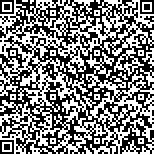| 本文已被:浏览 1050次 下载 790次 |

码上扫一扫! |
|
|
| 漳江口红树林沉积物真菌多样性分析及抗茶叶致病真菌生物活性筛选 |
|
于丽波1,2,4,祝耀华1,2,4,李升康2,3,汤熙翔1,2,4
|
|
1. 国家海洋局第三海洋研究所国家海洋局海洋生物遗传资源重点实验室,福建厦门361005;哈尔滨工业大学生命科学与技术学院,黑龙江哈尔滨150001;2. 国家海洋局第三海洋研究所国家海洋局海洋生物遗传资源重点实验室,福建厦门361005;汕头大学海洋生物研究所,广东汕头515000;3. 汕头大学海洋生物研究所,广东汕头,515000;4. 国家海洋局第三海洋研究所国家海洋局海洋生物遗传资源重点实验室,福建厦门,361005
|
|
| 摘要: |
| 以福建漳江口红树林国家级自然保护区红树林沉积物分离的真菌为对象,研究红树林沉积物真菌的多样性和筛选抗茶叶病原真菌活性的菌株.将分离纯化的135株真菌通过形态学和Ribosomal DNA-Internal Transcribed Spacer(rDNA-ITS)序列测定进行鉴定及多样性分析,归为40个种类型,分别属于17个属,其中青霉属(25%)为优势菌,木霉属(15%)、曲霉属(10%)和镰刀属(10%)次之,表明红树林沉积物真菌具有丰富的多样性;利用平板对峙法对真菌的发酵粗提物抗茶叶病原真菌生物活性研究,结果发现,共有17株(占42.5%)真菌具有抗茶叶病原真菌活性,其中15株能够抑制茶叶轮斑病(Pestalotiopsis theae)LH13,12株能够抑制茶叶炭疽病(Colletotrichum gloeosporioides)LH30,8株能够抑制茶叶溃疡病(Neofusicoccum sp.) LH107,有两株对这三种茶叶致病菌均有较强活性.这些活性菌株分布在6个属中,分别是青霉属(7株)、木霉属(3株)、镰孢属(2株)、枝孢属(2株)、白地霉属(2株)和球腔菌属(1株).由此可见,红树林沉积物真菌抗菌活性菌株的种属分布具有多样性. |
| 关键词: 红树林沉积物 海洋真菌 多样性 茶叶病原真菌 生物活性 |
| DOI: |
| 分类号:Q938.1 |
| 基金项目:福建省科技计划重点项目(2013N0019),南北极环境综合考察与评估专项资助项目(CHINARE2015-01-06) |
|
| Diversity of Marine Fungi Isolated from the Mangrove Sediments of Zhangjiang River Estuary and the Bioactivity Against Tea Leave Pathogenic Fungi |
|
YU Libo1,2,4,ZHU Yaohua1,2,4,LI Shengkang2,3,TANG Xixiang1,2,4
|
|
Key Laboratory of Marine Biogenetic Resources,Third Institute of Oceanography,SOA,College of Life Science and Technology,Harbin Institute of Technology,Institute of Marine Biology,Shantou University
|
| Abstract: |
| The culture-dependent method was conducted to investigate the fungi diversity and screen the anti-pathogenic fungi of tea from the mangrove sediment at the estuary of Zhangjiang River,Fujian Province.A total of 135 fungi were isolated and identified based on analysis of Ribosomal DNA-Internal Transcribed Spacer(rDNA-ITS)sequence.Most of the fungi were Ascomycota,while the others belonged to Basidiomycota and Zygomycota.The 40 phylotypes belonged to 17 genera,and Penicillium was the dominant.Tablet lag activity screening of the anti-pathogenic fungi of tea showed a total of 17strains(42.5%)having inhibition activity against Pestalotiopsis theae LH13(15),Colletotrichum gloeosporioides LH30(12),and Neofusicoccumsp.LH107(8).These strains were distributed into six genera,which were Penicillium,Fusarium,Trichoderma,Cladosporium,Galactomyces and Phaeosphaeria.These results indicated that the fungi in these mangrove sediments had both a high biodiversity and a varietyof anti-fungus activity. |
| Key words: mangrove sediment marine fungi biodiversity tea pathogenic fungi biological activity |

